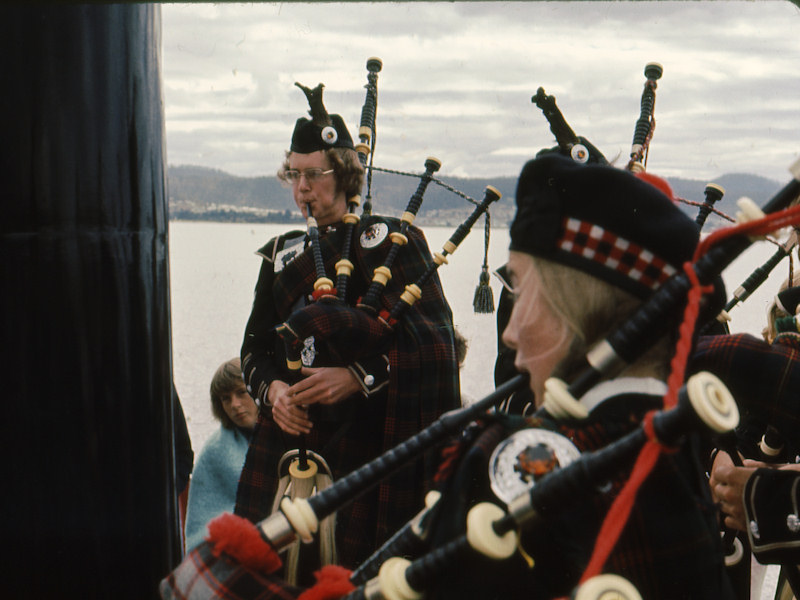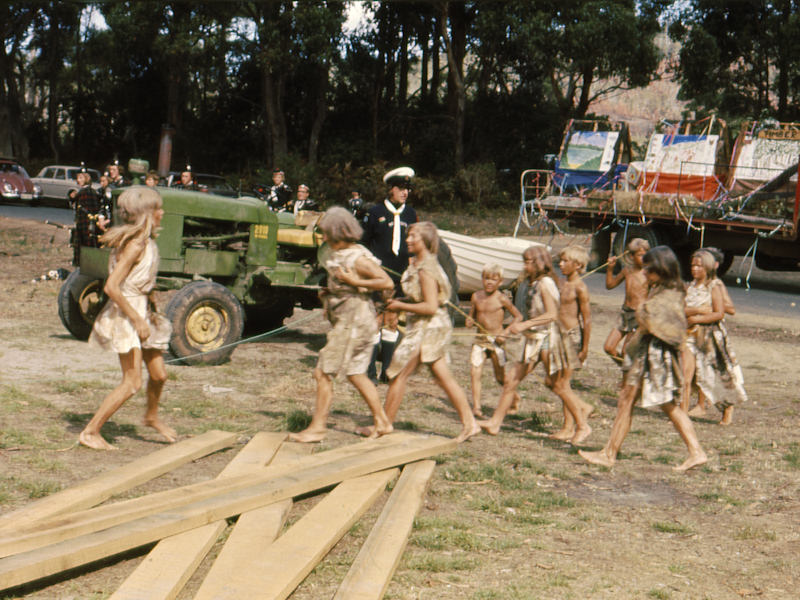
Photo album: "200th anniversary"
Fly over a photo with the mouse to enlarge it
Click on a photo to open it in a new window
We are back in Hobart in the evening on Thursday, March 8th 1973. The last night and the last day of travel were very agitated with a force 10 storm. To walk in the corridors, we didn't know any longer if we had to step on the floor or on the walls. Once disembarked I felt as if everything were still moving and I was nearly sicker on the ground than in the ship. On Friday, Jacques Bitterly and I go to Qantas agency to have our return tickets made. In the evening we attend the traditional reception of the "Alliance Française". On Saturday, March 10th, we go to Bruny island where the ceremony to feast the 200th anniversary of England taking possession of Tasmania is to take place. Our journey will begin the next day.
 |
It is with the sound of bagpipes music that we are travelling. |
 |
Some of the bagpipers are rather young, some of them are girls. |
 |
On this stele is carved: To honour Capt Tobias Furneaux discoverer of this bay March 9th 1773 and Capt James Cook who landed here Jan 26th 1777. 26 1 1961 |
 |
Children will represent aborigines who were living in Tasmania. |
 |
Representation of the landing of Captain Furneaux. He carries the British flag and is accompanied by two sailors. |
 |
One of the sailors carries a wooden chest which probably contents shoddy goods to be used as exchange currency with the Aborigines. |
 |
After the official speeches studded with a few typical British humour pieces, these very official people are accomplishing a symbolic and commemorative reforesting operation. |
.
.
.
.
.
.
.